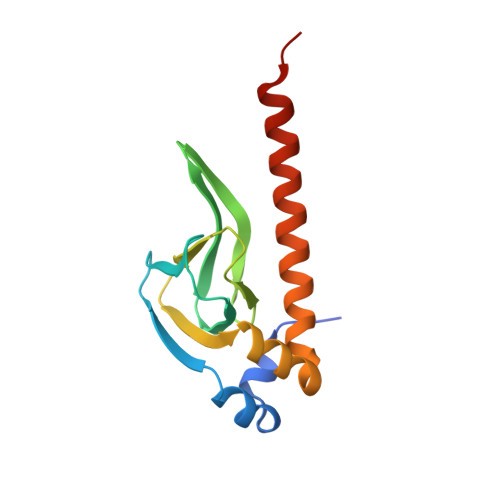Testing the N-Terminal Velcro Model of CooA Carbon Monoxide Activation.
Tripathi, S., Poulos, T.L.(2018) Biochemistry 57: 3059-3064
- PubMed: 29708736
- DOI: https://doi.org/10.1021/acs.biochem.8b00359
- Primary Citation of Related Structures:
6CPB - PubMed Abstract:
CooAs are dimeric bacterial CO-sensing transcription factors that activate a series of enzymes responsible for CO oxidation. The crystal structure of Rhodospirillum rubrum (rrCooA) shows that the N-terminal Pro from monomer A of the dimer coordinates the heme of monomer B that locks rrCooA in the "off" state. When CO binds, it is postulated that the Pro is replaced with CO, resulting in a very large reorientation of the DNA binding domains required for specific binding to DNA. Crystal structures of the closely related CooA from Carboxydothermus hydrogenoformans (chCooA) are available, and in one of these, the CO-bound on-state indicates that the N-terminal region that is displaced when CO binds provides contacts between the heme and DNA binding domains that hold the DNA binding domain in position for DNA binding. This has been termed the N-terminal velcro model of CooA activation. The study presented here tests this hypothesis by generating a disulfide mutant that covalently locks chCooA in the on-state. A simple fluorescence assay was used to measure DNA binding, and the S-S mutant was found to be in the on-state even without CO. We also determined the high-resolution crystal structure of the apo-heme domain, and the resulting structure is very similar to the holo-heme-bound structure. This result shows that the heme binding motif forms a stable structure without heme or the DNA binding domain.
Organizational Affiliation:
Departments of Molecular Biology and Biochemistry, Pharmaceutical Sciences, and Chemistry , University of California, Irvine , Irvine , California 92697-3900 , United States.
















